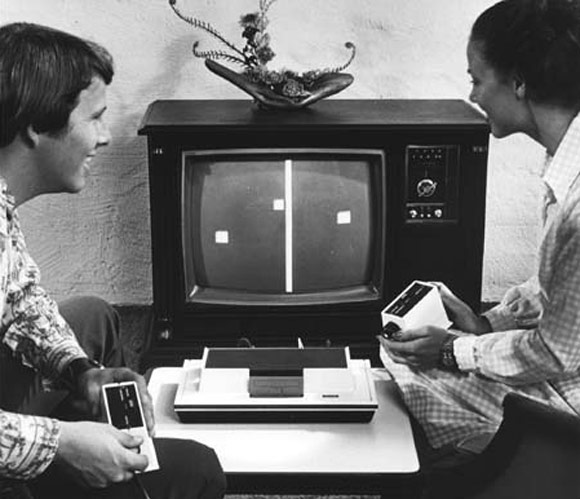

Magnavox odyssey tv#
The device allows users to switch the television input between the odyssey regular TV input cable. The Odyssey is connected to the television set through the use of a switch box. Design-wise, the consisted of a white, black and brown box that connected to a regular Television set and two controllers in the shape of a rectangle as shown above. Baer and initially showcased at a convention in Burlingame, California on May 24, 1972. Pre-dating the Atari Pong home console by three years, the Odyssey was designed by Ralph H. The year 1972 saw the release of the Magnavox Odyssey, a technical marvel that’s considered the World’s first commercial home video game console. Status: Discontinued Release Price: US$99.95 Units Sold: 350,000 units Codename: Brown Box Generation: 1st generation of consoles That prototype would end up becoming what’s called the Brown Box from 1967 to 1968. Ultimately, he was granted $2500 and the time of two employees to help him design a prototype. Determined to make it work this time, he filled a proposal to the company which he was able to convince Baer’s boss, Herb Campman. While working for the defence contractors Sanders Associates, Baer came up with the idea of creating a game using the television screen. The latter did not want to go further with the idea and has eventually refused. His early adventure into video games began specifically in 1951 while working at Loral Electronics Company, and his attempt to convince the higher-ups in 1951 to let him create what was in his mind. Yet a few years later, when pretty much everyone gave up on bringing to the world what Thomas and Estle hoped, a man known as Ralph H Baer took it upon his shoulders to go beyond the original idea.īorn in Germany back on March 8, 1922, Baer is considered to be the father of video games.
Magnavox odyssey simulator#
It was a table tennis simulator released back on October 18, 1958.ĭespite all these early concepts and devices that are now considered primitive, the notion of playing games on the screen remained an obscure term. As a result, that technique created the first video game to be played by two people, Tennis for Two or known as Computer Tennis. Howbeit, it was thanks to the American William Higinbotham who made it possible by using a program to calculate trajectories and an oscilloscope. The Nimrod was the first computer designed by John Makepeace Bennett, and Raymond Stuart-Williams capable of running a video game. The year 1951 saw the release of what’s called the Nimrod, an early computer custom-built to play Nim, which in return was directly inspired by the Nimatron, an electro-mechanical machine that also played Nim. However, engineers and designers don’t know when to give up as innovation and dedication is something that goes through their veins. The 50s up to the 70s was a wild period for video games, specifically since the concept of playing video games was pretty much considered impossible at the time. Years have passed, and more people interested in bringing the possibility to play games on the screen began to pop up. However, such an innovative idea makes this theoretically the first interactive electronic game ever. While the idea looked impressive on paper, it was sadly never commercialised.


The device was inspired by the radar displays used in World War II, and would have allowed players to launch rockets at moving targets by using the CRT’s electron gun. Ultimately, after one year, they were granted their patent on December 14, 1948. Thomas and Estle wanted to explore the concept of allowing viewers to play with their television, and so they filled a patent for what is known as a Cathode-ray tube amusement device. Goldsmith Jr, and Estle Ray Mann who previously worked at Dumont Company in 1947. Some of the early attempters to put the idea into paper were Thomas T. The television would no longer remain an object used simply to receive programs, but also a device that consumers could fully interact with. With the rise of television in the 50s where around 90% of American homes had at least one TV set, questions about the possibility of revolutionizing the TV to an interactive device began to emerge.


 0 kommentar(er)
0 kommentar(er)
